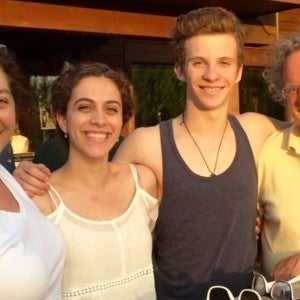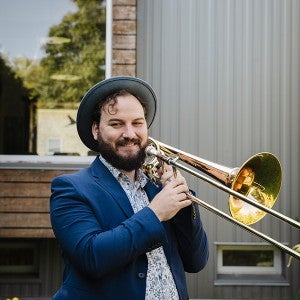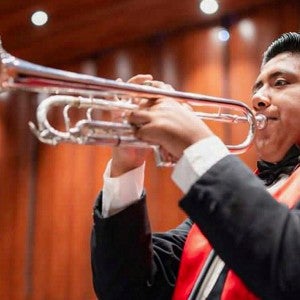Interlochen's Kawai piano, at home in the woods
Our Kawai grand piano has made its long journey from Japan to its new home in a practice hut on Interlochen's campus, where students will use it to sharpen their skills on their journey as artists.

Every summer, the forested trails of the Interlochen Center for the Arts campus fill with the sounds of the wind, birds … and pianos. The warm weather brings students from around the world to the Interlochen Arts Camp, where they study a variety of fine arts, including piano. Here, among the gentle breezes and greenery, they begin their lessons, practicing on pianos housed in the practice huts that dot the woods.
The pianos are used daily, with students dutifully practicing day … after day … after day.
With so much ivory tickling going on, it’s no wonder that Interlochen needs dozens of new pianos each year. On average 24 grands and up to 52 uprights find peaceful new homes here.
How they get here, though, is a major undertaking, especially when you realize that it isn’t just the students that come here from around the world.
One major supplier of Interlochen’s pianos is Kawai, an international and award-winning manufacturing organization located in Hamamatsu, Japan. The company has been building quality pianos since 1927, and prides itself on producing some of the finest musical instruments in the world.
Recently, one of their finely crafted pianos was followed on its journey to Interlochen.
The trip began in Kawai’s Hamamatsu factory, where each piano is handmade, taking anywhere from six months to two years to produce. Literally hundreds of people will work on a single piano during this time, from the seasoning of the soundboard wood to the construction of the thousands of individual elements in the action.
A Kawai grand piano, like the GX-2 model built for Interlochen, is comprised of more than 10,000 precision parts, including wood, metal and composites like carbon fiber. Kawai was the first manufacturer to use carbon fiber in its pianos, making them lighter, stronger, and 25 percent faster in the action than similar models.
The process makes these new pianos much more responsive and consistent in their touch and tone over time. Interlochen needs this in the instruments it provides for its students, considering all the shrinking and swelling that wooden parts will go through in the northern Michigan climate. After all, it’s a long way from Japan.
From Hamamatsu, the piano traveled to the port of Shimizu where it was loaded aboard the MOL Experience, a 965-foot-long container ship bound for Long Beach, California. This leg of the journey took three weeks and stretched 5,600 miles across the Pacific. (See photos from that journey here.)
Once unloaded in Long Beach, the piano took a brief side-trip to the Kawai America Corporation offices in Rancho Dominguez, Calif., where Senior Vice President Brian Chung added a personal message to the shipping container. Soon afterward, though, the piano found itself loaded into a semi and launched on a five-day trek across the continent to Michigan. Some 2,300 miles later, the piano passed the Indiana border into Michigan, and turned northward to climb another 240 miles to the top of the state’s lower peninsula—and finally arrive at Interlochen. All said and done, the journey took more than a month and spanned more than 8,140 miles.
With the long road now behind it, the Kawai was gently unloaded and carefully moved across the green Interlochen campus to find its home in Practice Hut S-14, just one of the many such huts that pepper the forested grounds. Unwrapped, polished and perfectly tuned, the beautiful addition to the Camp will now allow scores of students from around the world to practice … and practice … until perfect.
Infographic - A Piano's Journey





